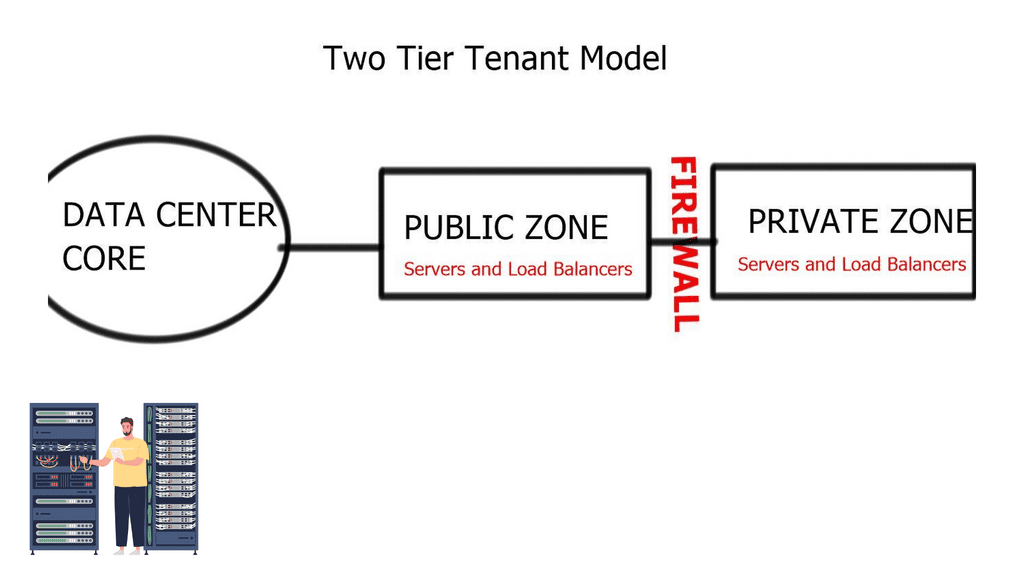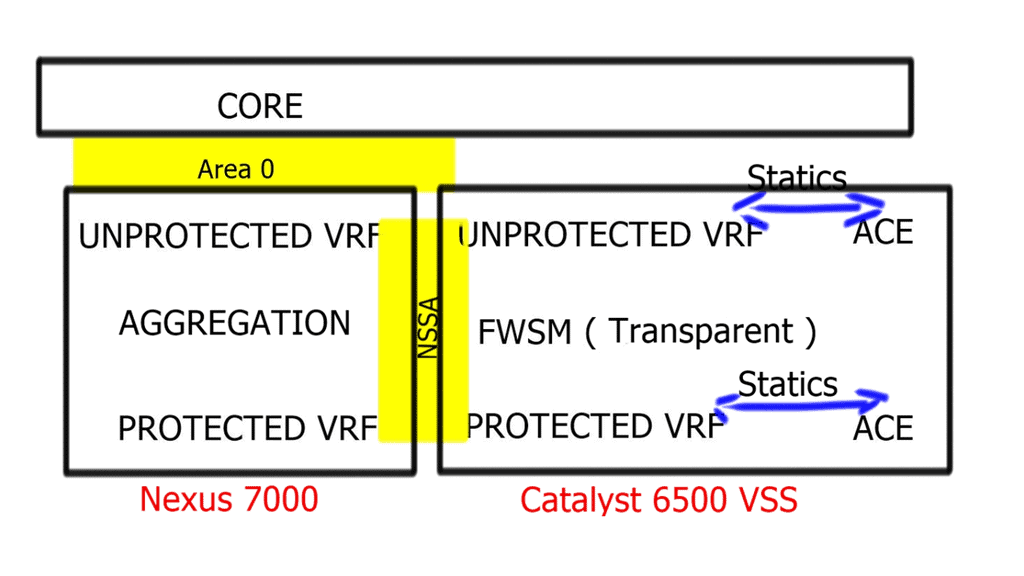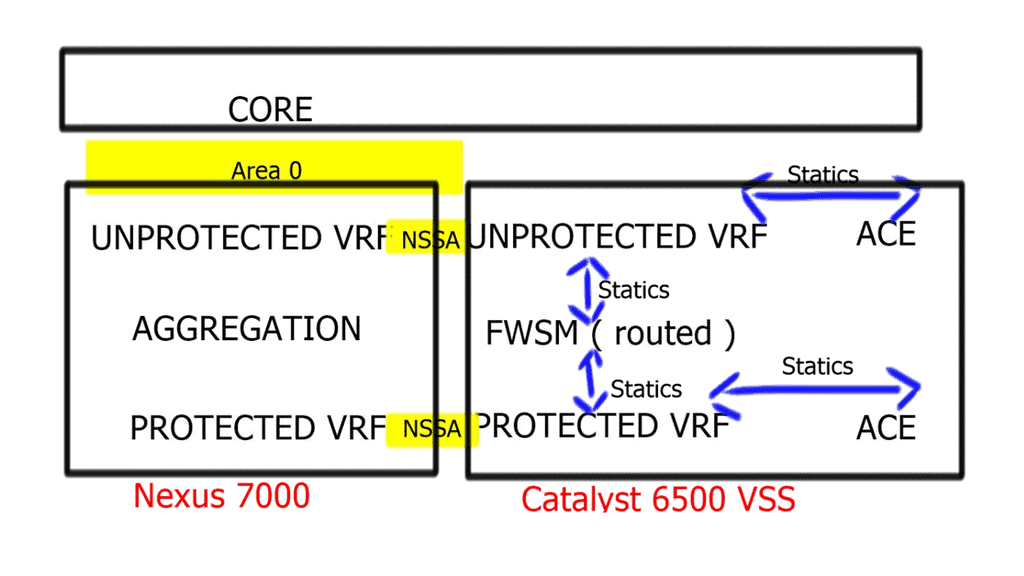Data Center Design Guide
In this digital age, where data is the lifeblood of businesses, designing an efficient and reliable data center is crucial. This guide will take you through the key factors to consider when planning and constructing a state-of-the-art data center that meets your organization's needs.
Before embarking on the design process, it's essential to understand your requirements. This section will explore factors such as expected data load, power and cooling needs, scalability, and security considerations. By thoroughly assessing these requirements, you can lay a solid foundation for the design phase.
Layout and Infrastructure: The layout and infrastructure of a data center play a pivotal role in its efficiency and functionality. This section will delve into topics like rack placement, cabling architecture, power distribution, cooling systems, and physical security measures. By optimizing these aspects, you can ensure optimal performance and minimize downtime risks.
Redundancy and Resilience: Data centers must be designed with redundancy and resilience in mind to prevent any single point of failure. This section will discuss strategies for implementing backup power systems, redundant network connectivity, failover mechanisms, and disaster recovery plans. These measures will enhance the reliability and availability of your data center infrastructure.
Environmental Considerations: Data centers consume significant amounts of energy, contributing to environmental impact. This section will explore best practices for energy efficiency, including the use of renewable energy sources, waste heat recovery, and intelligent cooling solutions. By implementing sustainable practices, you can reduce your carbon footprint and operate a greener data center.
Monitoring and Management: Efficient data center management is essential for optimizing performance, identifying potential issues, and ensuring seamless operations. This section will cover topics such as remote monitoring tools, data analytics for predictive maintenance, incident response protocols, and ongoing capacity planning. By implementing robust monitoring and management practices, you can proactively address challenges and maximize uptime<.br>
Matt Conran
Highlights: Data Center Design Guide
Modern enterprise operations are centered around data centers. Businesses, partners, and customers worldwide rely on the data center to deliver resources and services.
Small and mid-sized businesses can often build a proper “data center” in a closet or other convenient room with few modifications. However, the sheer scale of enterprise computing necessitates an ample, dedicated space designed to handle the IT infrastructure’s space, power, cooling, management, reliability, and security needs.
Regarding capital investment and recurring operational expenses, data centers represent the business’s largest and most expensive asset. Throughout the facility’s lifecycle and with changing business circumstances, business and IT leaders should pay close attention to the issues involved in data center design and construction.
1. Location and Site Selection:
Choosing the right location for a data center is crucial. Factors such as proximity to power sources, access to fiber optic networks, and environmental considerations must be considered. Additionally, site security, including physical security measures and disaster recovery plans, should be carefully evaluated during the site selection.
2. Infrastructure and Power:
Data centers require a robust infrastructure to support their operations. This includes redundant power sources, backup generators, uninterruptible power supply (UPS) systems, and efficient cooling mechanisms. Implementing energy-efficient technologies can help reduce operating costs and minimize environmental impact.
3. Network Connectivity and WAN Design Considerations
Reliable network connectivity is essential for data centers. Businesses should consider multiple internet service providers (ISPs) to ensure redundancy and minimize the risk of network downtime. Implementing high-speed, low-latency connections is crucial for meeting the growing demands of data-intensive applications.
4. Scalability and Flexibility:
Data center design should allow scalability and flexibility to accommodate future growth and changing business needs. Modular designs and flexible rack layouts make adding or removing equipment as required easier. Additionally, utilizing virtualization technologies can help optimize resource utilization and improve overall efficiency.
5. Security and Access Control:
Data centers house sensitive and valuable information, making security a top priority. Implementing robust physical security measures such as biometric access controls, video surveillance, and fire suppression systems is essential. Regular audits and assessments should be conducted to ensure compliance with security standards and industry regulations.
6. Environmental Considerations:
Data centers consume significant amounts of energy and generate heat. Designing energy-efficient data centers can help reduce operational costs and minimize carbon footprint. Innovative approaches, such as utilizing renewable energy sources and implementing advanced cooling techniques, can contribute to a greener and more sustainable data center infrastructure.
7. Monitoring and Management:
Efficient monitoring and management systems are crucial for maintaining optimal data center performance. Implementing comprehensive monitoring tools can provide real-time insights into power consumption, temperature levels, and network performance. Additionally, automated management systems can help streamline operations and minimize human errors.
For pre-information, you may find the following posts helpful.
Data Center Design Guide Key Data Center Design Guide Discussion Points: |
|
Back to Basics with Data Center Design Guide
- A primary tenant container is a two-tier tenant model that contains a “public” zone and a firewall-protected “private” zone. Load Balancing services are available within each zone.
- Virtual Routing and Forwarding instances ( VRF ) contain tenant-routing information that is exchanged via OSPF.
- Tenant VLANs in the Layer 2-domain map to corresponding VRF. VLANs and VRFs provide path and device isolation.

This example utilizes Nexus 7000 series as the Aggregation Layer device. The services layer utilizes a Dedicated Data Center Services Layer ( DSN ) with Catalyst 6500 Virtual Switching System ( VSS ) instead of an external firewall and load balancing appliances. VSS provides redundancy and increased throughput, resulting in one control plane and two data paths. Chassis-based DSN layer provides firewall and load balancing services with Application Control Engine Modules ( ACE ) and Firewall Services Modules ( FWSM ).
- A key point: Routed and transparent mode.
In routed mode, FWSM acts as a router hop in the network. The routed mode supports many interfaces, and each interface can have its subnet. In transparent mode, FWSM acts like a bump in the wire ( Layer 2 firewall ), not a router hop in the network. FWSM connects the same network on its inside and outside interface. Set independent modes for each context’s mode to either routed or transparent mode.
Key Data Center Design Points:
- OSPF for each Tenant. Essentially, two separate routing domains are connected via static routes. The first routing domain is the unprotected network and the second routing domain is the protected network. These domains don’t directly connect because their OSPF Areas don’t touch.
- Stub Areas and Not-so-stubby ( NSSAs) were chosen for the Stub area type. NSSA areas provide the benefits of a stub area and the capability to import external information, e.g., static routes.
- The “unprotected” VRF connects to OSPF Area 0.
- The “protected” VRF does not connect to any other OSPF Area. Static routes provide complete isolation and full reachability to the public zone. Static routes redistribute into OSPF at Autonomous System Border Routers ( ASBRs )
Tenant routing with FWSM in transparent mode

Key Points:
- OSPF utilized for each Tenant results in a single routing domain.
- Stub Areas utilized and Not-so-stubby ( NSSAs) chosen for Stub area type.
- The “unprotected” and “protected” VRFs share the same OSPF NSSA area. OSPF NSSA extends through FWSM, creating one routing domain instead of two separate ones, as evident when FWSM acts in routed mode.
Following the two-tier model’s basic structure, one can scale out and build other tenant models, for example, a two-tier with a single firewall and multiple private zones, a two-tier with various firewalls and multiple private zones, a three-tier model, etc.
Summary: Data Center Design Guide
In today’s digital age, data centers play a crucial role in storing and processing vast amounts of information. Designing a data center that is efficient, scalable, and future-proof is essential for businesses and organizations. In this comprehensive guide, we explored the key factors to consider when designing a data center, from layout and cooling systems to power management and security.
Assessing Requirements and Goals
Before starting the design process, it is crucial to assess the data center’s specific requirements and goals. This includes anticipated workload, scalability needs, power and cooling considerations, and security requirements. Understanding these aspects can establish a solid foundation for the design process.
Layout and Space Optimization
Efficient space utilization is a critical aspect of data center design. This section will explore various layout strategies, including hot and cold aisle containment, rack placement, and modular design. By optimizing space utilization, you can maximize the capacity of your data center while ensuring proper airflow and cooling.
Cooling Systems and Energy Efficiency
Data centers generate significant amounts of heat, and efficient cooling systems are paramount to prevent equipment overheating. This section will explore different cooling methods, such as air-based and liquid-based systems, and the importance of energy-efficient practices. We will also discuss the benefits of utilizing free cooling techniques and implementing advanced cooling control systems.
Power Management and Backup Solutions
Uninterrupted power supply is crucial for data centers to avoid costly downtime. This section will examine various power management strategies, including redundant power sources, uninterruptible power supplies (UPS), and backup generators. We will also discuss the importance of implementing effective power monitoring and management systems.
Security and Access Control
Data centers house sensitive and valuable information, making security a top priority. This section will explore strategies for physical security, including surveillance systems, access control measures, and environmental monitoring. Additionally, we will discuss the significance of implementing robust cybersecurity measures to safeguard data from external threats.
Conclusion:
Designing a data center requires careful planning and consideration of various factors. By assessing requirements, optimizing space, implementing efficient cooling and power management systems, and prioritizing security, you can create a data center that is both reliable and scalable. Remember, a well-designed data center is the backbone of any digital infrastructure, supporting the seamless flow of information and enabling businesses to thrive in the digital era.


